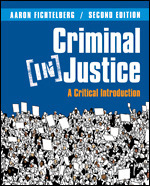You are here
Activity 1: Interpreting The Constitution
Activity 1: What Would You Do? Interpreting The Constitution
- Time frame: Approximately 30 Minutes
- Setting: Online or face-to-face
- Learning Objective 9.6: Identify the central political issues around appointing appellate judges and interpreting the Constitution.
- Source: Chapter 9 from Criminal (In)Justice: A Critical Introduction, 2e
by Aaron Fichtelberg
What would you do?
You are an appellate judge hearing the case of a woman, Lauren, who is accused of drug trafficking. The primary evidence against her was gathered using drone technology. The police, without a warrant, used unmanned aerial drones to follow her for several days, circling her home or any building she was in until she came outside. She was effectively under 24-hour surveillance. Eventually, the drone spotted her in her backyard exchanging amphetamines for money with a customer, and she was arrested.
The Fourth Amendment protects individuals from “unreasonable searches and seizures.” In the case of California v. Ciraolo (1986), the Supreme Court ruled that surveillance from an airplane flying over 1,000 feet is not a search and therefore does not require a warrant. Lauren’s attorneys argued that the level and intensity of the surveillance that their client endured was much more intrusive than merely flying over her house. She was followed around all day and night without a warrant, though she was only seen on camera while she was out in public. This, they argue, was unreasonable, and therefore, they claim, the evidence against her should be thrown out of court.
- How would you rule in this case?
- How would you go about interpreting the Fourth Amendment in relation to this case?
- Does California v. Ciraolo help you determine the answer, or is Lauren’s lawyer correct that unmanned drones are different from traditional, manned aircraft?



